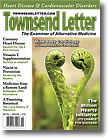|
The Wall Street Journal editorial: The cancer revolution. Wall Street Journal. Jan. 7–8, 2012:A14.
The editorial is anonymous and provides no substantiation for the statements that it makes. Also, the editorial is on cancer mortality rates/5-year survival rates. Thus, it relates only to the treatment side of the cancer program, and does not cover the prevention side of the cancer program. Therefore, it misses entirely one half of the picture in measuring the success of the cancer program.
The editorial states: "That measure has climbed to about 68% for all cancers from 45% in 1975, according to the National Cancer Institute"
My response: From 1975 to when/what year? From what source were these data obtained? Also, there is more than one measure of survival (5-year survival) and their outcomes vary. Which type of survival is the editorial discussing?
The editorial states: "Even for lung cancer… the survival rate has been rising since 1988, though it is still less than 20%."
My response: For lung cancer, the editorial does not provide survival data from 1975 (as for other cancers), but only from 1988. And it does not give a reason for doing so. Also, the editorial does not specify the last year of the period used for the lung cancer survival data. Thus, the data are not comparable with the other cancers mentioned. The reason that the editorial does not provide the 1975–present survival for lung cancer, one would surmise, is that that rate is very low. So, the editorial picks a time period which provides a deceivingly better picture.
With regard to survival data, how does the writer of the editorial know that the five-year survival rate is a better measure than the mortality rate? There is absolutely no substantiation to support such a grandiose statement. In the absence of substantiation, the statement is an opinion that is pulled out of the air.
In fact, a number of reasons make the mortality rate the correct measure for assessing success of the cancer program – in treating cancer. These reasons are discussed in this response.
For one, the mortality rate is based on the number of people who die from cancer (per 100,000 of population). Death numbers are derived from death certificates which are factual, solid data.
Moreover, according to an article published in the Journal of the American Medical Association:
While 5-year survival is a valid measure to compare cancer therapies in a randomized trial, comparisons of 5-year survival rates across time (or place) may be extremely misleading. If cancer patients in the past always had palpable tumors at the time of diagnosis while current cancer patients include those diagnosed with microscopic abnormalities, then 5-year survival would be expected to increase over time even if new screening and treatment strategies are ineffective. To avoid the problem introduced by changing patterns of diagnosis, observers have argued that progress against cancer be assessed using population based mortality rates …
… any advance in the time of diagnosis will result in finding more patients early in their disease course, and will increase 5-year survival because of the spurious effect of lead time.
…Our data suggest that physicians (as well as policymakers and patients) cannot make any inferences about the effectiveness of early diagnosis or treatment from temporal changes in 5-year survival.
…We argue that improving 5-year survival over time for a specific tumor may not reflect reduced disease burden and should not be taken as evidence of improved prevention, screening, or therapy. Improved 5-year survival may instead reflect more cases diagnosed and unchanged mortality – arguably an increased disease burden.
…When the National Cancer Institute convened experts to assess the various measures of progress against cancer, the committee was clear about which measure was most important: mortality rate (Extramural Committee to Assess measures of Progress Against Cancer, 1990). Mortality rates would be expected to decrease with any improvement in cancer control: be it risk factor reduction (i.e., primary prevention), successful early detection efforts (i.e., screening), or better treatment of advanced disease. To measure true progress in the "war against cancer," physicians and policymakers should focus on mortality. (Welch et al. 2000)
Also, according to a short article in the Journal of the National Cancer Institute, the 5-year survival statistic can be prone to biases and misleading results (Schmidt 2006). According to the article, of chief concern is that 5-year survival rates are heavily influenced by the time of diagnosis (as stated by H. Gilbert Welch, MD). To illustrate how that skews their interpretation, he offers the following example: Consider two individuals who both contract cancer at age 42 and then die from it at age 50. However, one isn't diagnosed until age 47, while the other is diagnosed at age 42. The first patient lives 3 years with a cancer diagnosis and contributes nothing to 5-year survival, while the second patient lives with the diagnosis for 8 years. Nevertheless, both patients live with cancer for the same duration and die from it at the same age.
Schmidt states: "'The data would lead you to think the second patient had a big improvement, but the reality is that the patient just lived with a [cancer] diagnosis for a longer time period,' Welch explains."
Conclusion
Therefore, increases in the 5-year survival rate can be largely the result of earlier diagnoses, as a result of technological changes. Such increases do not indicate progress in the treatment of cancer. Progress in the treatment of cancer is shown by decreases in the cancer mortality rate.
References
Extramural Committee to Assess Measures of Progress Against Cancer. Measurement of progress against cancer. J Natl Cancer Inst. 1990;82:825–835.
Schmidt C. NEWS – 5-year survival data not always a good measure of progress. J Natl Cancer Inst. December 20, 2006;98(24).
The cancer revolution. Wall Street Journal. Jan. 7–8, 2012:A14.
Welch HG, Schwartz LM, Woloshin S. Are increasing 5-year survival rates evidence of success against cancer? JAMA. June 14, 2000;283(22).
|



![]()
![]()
![]()

